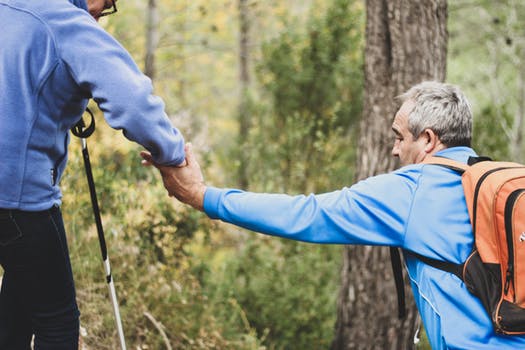Preventing Falls

Elderly family and friends are far more likely to fall than younger people for a number of reasons, but those missteps don’t have to happen and can be prevented with a little information and effort on everyone’s part.
The National Council on Aging (NCOA) estimates that an elderly American is seen in emergency rooms across the nation every 11 seconds because of an age-related fall, and reports that falling is the top cause of both fatal and nonfatal injuries for the elderly. They fall for a number of reason like overall frailty, medical conditions or medications that may cause side effects, decline in overall physical fitness, impaired vision, and sometimes because of slick floors, poor lighting and or even a piece of loose carpet.
Falls can be prevented, though.
The starting point is creating a safe home, according to the website EverydayHealth.com, which suggests a number of the same ideas supported by other elderly care experts. For example, clean up clutter like newspapers or old magazines that may impede safe walking. Check every room thoroughly for needed floor repairs that could throw a person off balance or trip them. Remove slippery area rugs. Install railings for steps and grab bars near toilets and bathtubs.
EverydayHealth.com also has suggestions from doctors that are not necessarily as well known. For example, help your loved one maintain clothing that fits properly and does not cause a tripping danger from hems that are too long or bagginess that may cause clothing to get caught on other objects. And make sure their shoes not only fit properly, but have nonslip soles.
AARP also has ideas for helping the elderly navigate their homes. For example, put glow in the dark tape on light switches, thermostats, doorways, and doorway thresholds. Their website, AARP.org, not only has ideas, but also wants you to share tips that may be unique. One caretaker shared this great idea – “To help cut down on trips and falls you can place red tape on all thresholds in the home. The red captures the brain’s attention and forces the eye to look down, helping to prevent trips. You can also outline the edges of steps, coffee tables and doorways with colored (plumber’s) tape to help prevent bumps and bruises.”
Talking to your loved one about preventing a fall is very important, too. The NCOA has a wonderful guide to starting the conversation that can be found at https://d2mkcg26uvg1cz.cloudfront.net/wp-content/uploads/Falls-Prevention-Conversation-Guide-for-Caregivers_Final.pdf
The conversation guide has several uses including information on talking to other family members and doctors about creating a prevention plan.
Make your senior loved one a partner in their overall health and explain that older adults really can improve balance and strength through activity and exercise.
The AARP calls exercise the “No. 1 weapon against falls” because new research shows staying active can significantly reduce the risk of falls and help the elderly stay independent longer. Walking, yoga or even routinely cleaning the house can be considered exercise, according to the AARP experts. The trick is to make it a routine – something like brushing your teeth every day. Exercise will be even more effective at preventing falls if strength and resistance training can be added to the routine. Pilates classes and resistance bands are helpful for this kind of workout.
NCOA, which provides a wealth of information for healthy living over 50, has a list of exercise programs that have been proven beneficial to the elderly. A brief descriptions of each of the evidence-based programs can be found at https://www.ncoa.org/center-for-healthy-aging/basics-of-evidence-based-programs/physical-activity-programs-for-older-adults/ .
The National Institute on Aging has literally thousands of articles about elderly exercise on its website and many free brochures like this one at https://order.nia.nih.gov/sites/default/files/2017-07/workout-to-go_508.pdf which shows simple, basic exercises for those just beginning. The institute also has a series of easy to follow videos on YouTube at
https://www.youtube.com/watch?v=8E8iCYG16ho.
As always, make your doctor a partner in all elderly care and talk to him or her about any exercise plans. Many seniors are find their balance with Eastern types of exercise such as Tai Chi or Yoga. Keeping the core strong helps improve balance which will in turn decrease falls.


